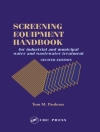Trench warfare is a type of land warfare using occupied fighting lines consisting largely of military trenches, in which troops are well-protected from the enemy's small arms fire and are substantially sheltered from artillery. The most famous use of trench warfare is the Western Front in World War I. It has become a byword for stalemate, attrition, sieges, and futility in conflict.
Trench warfare occurred when a revolution in firepower was not matched by similar advances in mobility, resulting in a grueling form of warfare in which the defender held the advantage. On the Western Front in 1914–1918, both sides constructed elaborate trench, underground, and dugout systems opposing each other along a front, protected from assault by barbed wire, mines, camouflaged trapping pits, and other obstacles. The area between opposing trench lines (known as "no man's land") was fully exposed to artillery fire from both sides. Attacks, even if successful, often sustained severe casualties.
With the development of armoured warfare, emphasis on trench warfare has declined but still occurs wherever battle-lines become static.
anonymous
Use of Mines in Trench Warfare / From the French School of St. Cyr [PDF ebook]
(Illustrated Edition)
Use of Mines in Trench Warfare / From the French School of St. Cyr [PDF ebook]
(Illustrated Edition)
Cumpărați această carte electronică și primiți încă 1 GRATUIT!
Limba Engleză ● Format PDF ● ISBN 9788834100158 ● Mărime fișier 0.7 MB ● Editura iOnlineShopping.com ● Publicat 2019 ● Descărcabil 24 luni ● Valută EUR ● ID 6990415 ● Protecție împotriva copiilor fără












